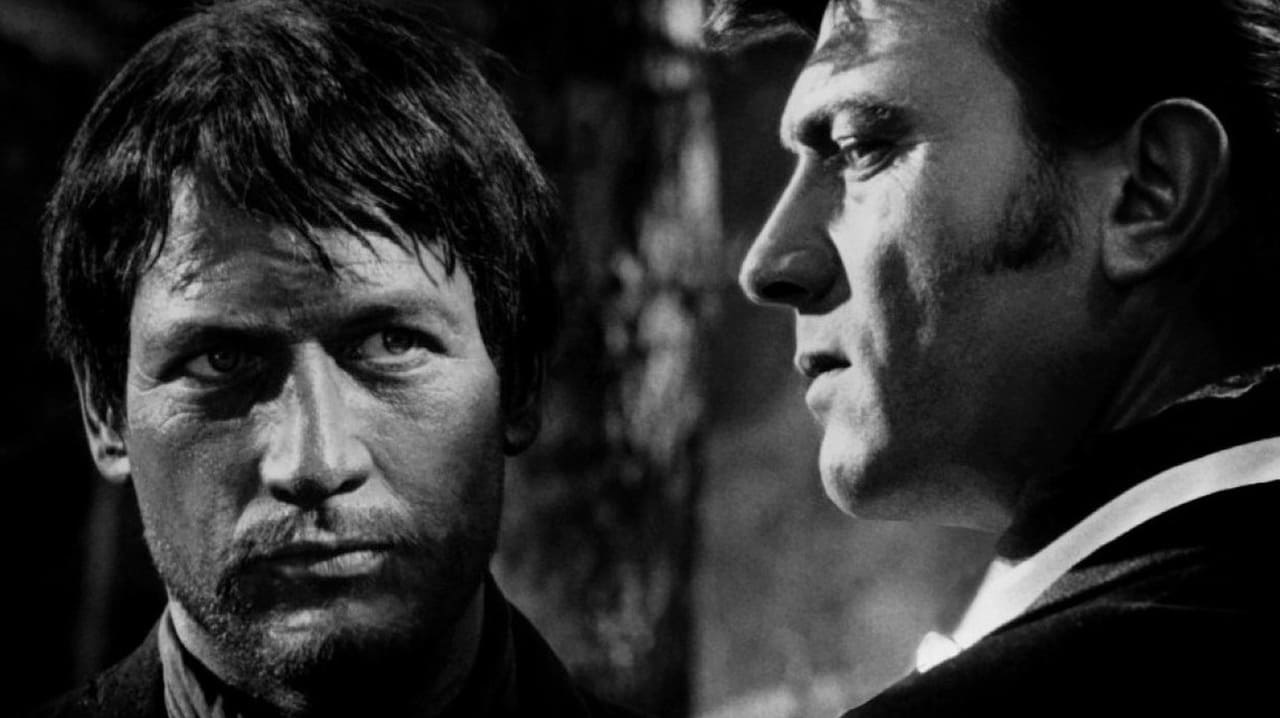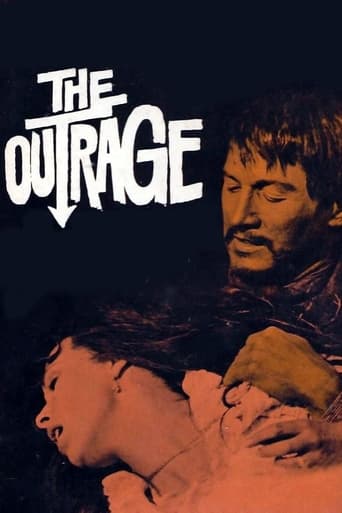



Well Deserved Praise
Absolutely the worst movie.
Although it has its amusing moments, in eneral the plot does not convince.
View MoreInstead, you get a movie that's enjoyable enough, but leaves you feeling like it could have been much, much more.
View MoreThe movie's a pretentious mess. This is Hollywood monkeying with art film themes and techniques at a time when foreign films were getting an American toehold. The 96-minutes, an adaptation of Rashomon, asserts such profundities as people bringing their preconceptions to what they see, that people can be both good and bad, and that the law sometimes makes mistakes based on reputation. Now such obvious truisms can make worthwhile themes if dealt with properly. Here, however, whiz-bang style appears uppermost as the flash-backs and jump-forwards multiply in haphazard fashion, muddying up the story threads, if you can call them that. I'm also betting that his big slice of ham didn't make it into Newman's book of fond memories. The flashy style and dressed-up themes may have been cutting edge in '63, but now the empty pretensions are transparent. No need to go on with what for me was an often boring disappointment.(In passing—in response to a fellow reviewer, I think the abandoned infant rescued at the end amounts to an affirmation of the future despite the human failings we have seen in abundance. Also, by the day's standards, they had to end on an upbeat note. Thus, the baby is sort of dropped in at the last minute.)
View MoreHaving never seen Rashomon I'm at bit of a disadvantage in writing about The Outrage. Nevertheless it's an attempt at something a little more unusual than the average western. As even the beating of Rodney King caught on videotape was successfully challenged in a court of law, what does that say about eye witness testimony? The Outrage is the story of an incident on a western trail that left a traveler dead and his wife ravaged by a bandit on the run.Rashomon the film is only the grandfather of The Outrage. It was first adapted as a Broadway play with Rod Steiger and Noel Willman playing the roles that Paul Newman and Laurence Harvey have on screen. It ran for 159 performances in the 1959 season and Claire Bloom who was Mrs. Rod Steiger at the time was the only one to repeat her role. Rod Steiger would have been a far better choice to repeat for the screen and he certainly has the screen name recognition. Newman was better box office, but Steiger was far better at playing all kinds of ethnic types.Added to the screen are the characters of Edward G. Robinson and William Shatner playing a conman and a disillusioned minister whose conversations with prospector Howard DaSilva provide a kind of narrative framework for the proceedings. DaSilva provides one of four versions of the events. All we know for certain is that Claire Bloom got violated by Paul Newman and Laurence Harvey wound up dead. At Newman's trial, he and Bloom provide differing accounts of what happened. An old Indian medicine man played by Paul Fix came upon a dying Laurence Harvey and Fix repeats it for the court. And then DaSilva tells Shatner and Robinson yet another version of the same events.Bloom is a southern belle, not quite of the upper crust, she married well and she does her best to imitate the behavior of one of the upper crust, no doubt taking Scarlett O'Hara as her model. Laurence Harvey is Ashley Wilkes had he married a road show version of Scarlett instead of Melanie Hamilton. Repeating her performance from Broadway, I'd say Claire was the best one in this film.The conclusion was most unsatisfactory in my humble opinion, the focus could have and should have stayed on the three protagonists not on the witnesses. Still The Outrage is definitely a most adult western.
View MoreIt is amazing that Martin Ritt and Paul Newman made this film between their two masterpieces "Hud" and "Hombre". It seems that they should have known that the stage acting that Newman was doing would not be effective on film. In stage acting, you play broad and loud because the 23rd row has to see and hear you. In film you can adjust the volume and go in for the close-up to make sure the slightest gesture gets shown. For whatever strange reason, everybody, with the exception of super-old pro Edward G. Robinson, is doing stage acting. It comes across as over-the-top and ridiculous most of the time. The acting seriously undercuts the serious metaphysical questions about truth that the plot raises.Newman's performance matches his worse performance in "From the Terrace," although, I haven't seen him in "the Silver Chalice" (allegedly his worse). He reminded me of the 1960's cartoon commercial character for Frido's Corn Chips, "the Frido Bandido." He has on heavy stage make-up, so he is hardly recognizable, and his accent sounds quite fake. The real problem is that this is not a leading man role, but a role for a character actor. There were probably hundreds of out of work Spanish speaking actors in Hollywood at this time who could have done the role better.William Shatner isn't playing to the 23rd row, he is playing to the 46th row. As a priest who has lost his faith, he has one pained look throughout the movie. One of the nice things about Shatner is how relaxed and animated he is in all his roles, from the Twilight Zone to Star Trek to Boston Legal. Here he is the opposite: restrained to the point of being a cartoon cut-out.Claire Bloom and Laurence Harvey also give mundane and forgettable performances.For cinema fans this is worth seeing because it is a Martin Ritt film and he was a terrific director. However, like every great director, he had his misfires, and this is one of them. It is watchable, but much more should have been delivered considering the classical source material.
View MoreThe minute I saw this film, I immediately thought of 1951's "Rashomon." I didn't care for that film and this interpretation was really the pits, despite a totally unrecognizable Paul Newman giving a superb performance as a Mexican bandit.Everyone has a different interpretation why the Laurence Harvey character died in this film. Truth is that it's usually every type of circumstance depicted with the exception of the truthful one. This one is practically no exception either.Edward G. Robinson is perfect as the con man offering his two cents into the situation.Anyone think of what the baby was supposed to represent in this film? I had no idea either.The film was boring and could have been told in about 20 minutes to half an hour-tops.
View More